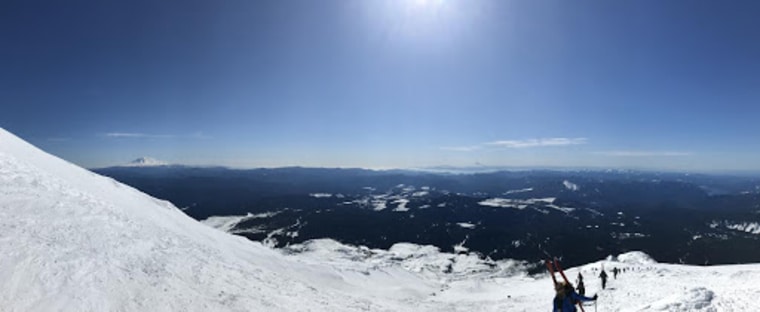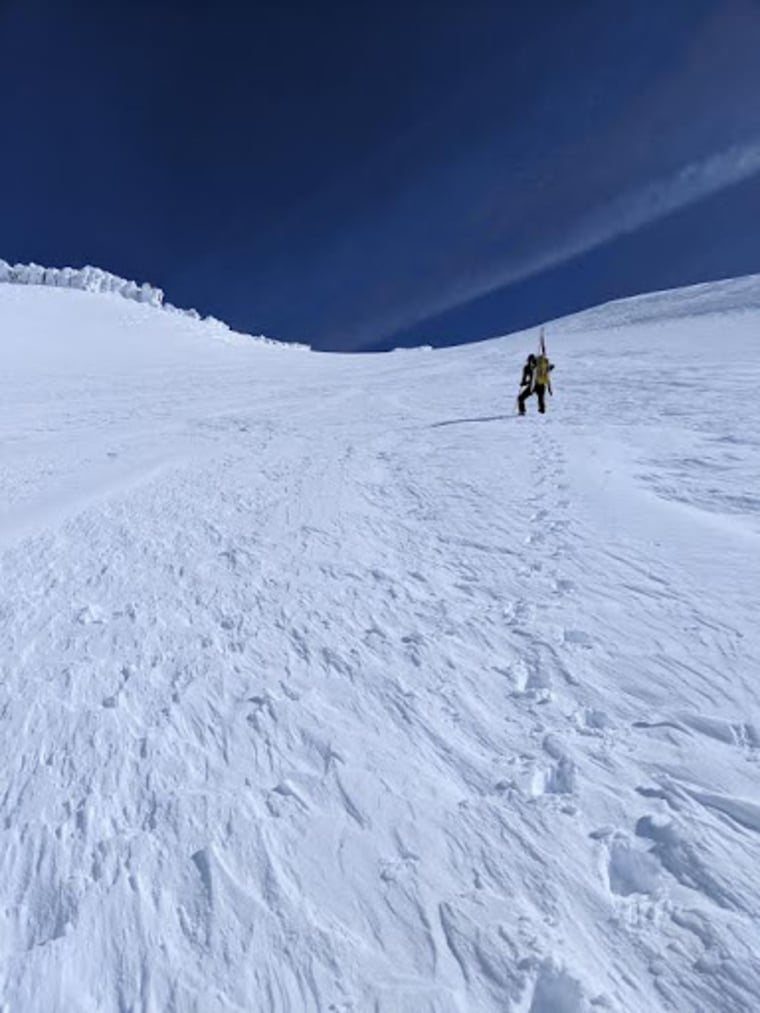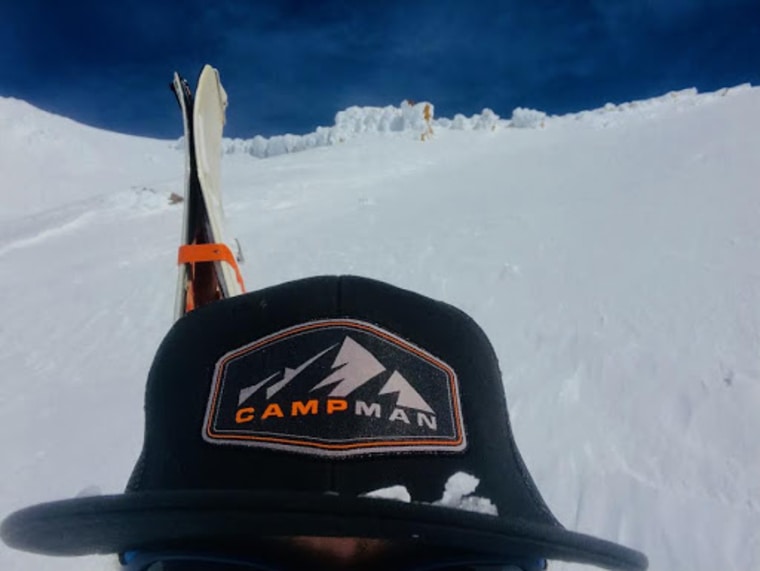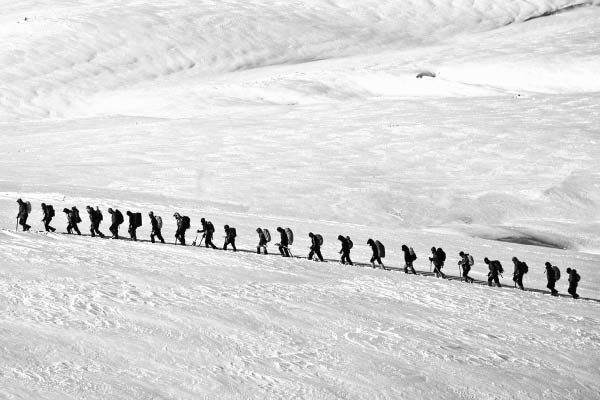So You Want to be a Mountaineer, Do You?
Posted by Dan Goodman on 11th Apr 2019
That makes you, me, and anyone else who saw the Meru film. For better or for worse, not all of us can be Conrad Anker or Jimmy Chin and so have to start out with smaller, less committing objectives. There are plenty of options for training grounds in the United States, but the volcanoes of the Pacific Northwest offer a little bit of everything in one conveniently packaged locale.
From navigating backcountry terrain to tackling vertical ice pitches to mitigating crevasse hazards, these volcanoes have it all. With a decently long climbing season that generally spans from April-August, there are plenty of options for not only where to go but when to go as well. Thanks to the relatively easy access, these volcano climbs are all great options to gain mountaineering experience and become more comfortable moving in the mountains. So, whether your ultimate goal is to climb Denali, Mt. Everest, or to get the speed record on your local mountain, here are a few great routes in Cascadia that won’t cost you an arm and a leg to climb. At least, we hope not.
***As a disclaimer, none of these routes are trivial and require good physical conditioning as well as mountaineering skills. If you don’t have those skills, it is a good idea to connect with the local ranger station or local guiding companies to arrange for a guide to help you along the way.

1. Mt. St. Helens via the Worm Flows Route
Average Time to Summit: 4-6 hours
Difficulty: About as difficult as spending the holidays with the in-laws. It feels like it takes forever and it’s boring, but manageable.
Recommended gear: Crampons and an ice axe as the top can be covered in rime.
This route is perfect for anyone who has little to no mountaineering experience. Although there are some objective hazards like traveling in avalanche terrain and avoiding cornice fall, it is simply a long, steep slog up a mountain. Starting just above 2,600 feet in elevation, the trail meanders through the trees for several miles until it pops you out at the base of the mountain. From there simply follow the well-traveled ridgeline to the summit at 8,366 feet. Walking down is one option, but it’s much better on skis. Many will summit in a single day but it is not unusual to do this route over two days.

2. Mt. Adams via the South Spur
Average Time to Summit: 6-8 hours
Difficulty: Like running a half marathon immediately after eating spicy food. Doable, but unpleasant.
Recommended gear: Crampons, an ice axe, and a short rope in case you encounter crevasses, which is highly unlikely via this route.
Also known as the South Climb, the South Spur is another fantastic option for those who don’t have much experience climbing mountains. Hazards include avalanches and rockfall, but a spring ascent mostly just means a long day of travel, likely 6-8 hours to the summit for most parties. Route finding is slightly more challenging and since it is less a well-traveled route when compared to Mt. St. Helens, it is possible to encounter downed trees or unpaved sections of road that can cause significant delays. Plan for a full day or two out on the mountain.

3. Mt. Hood via the South Side
Average Time to Summit: 4-6 hours
Difficulty: Akin to watching all 8 Harry Potter movies non-stop. Everyone wants to try it but only the dedicated will prevail.
Recommended gear: Crampons, ice axe, and a rope when the bergshrund is open.
Commonly referred to as the Hogsback route, this iconic route is incredibly popular and for good reason. This is the first route on our list that ups the ante in terms of relative difficulty and risk. Walk, skin, run or take the lift to 8,500 feet where the climb begins in earnest. What this route lacks in route finding difficulties, it makes up for in a more technical sense. As you ascend past the ski resort you will hit the Hogsback, a snow ridge behind Crater Rock and from there you have several options: either take the “Old Crater Route” on climber’s left which involves a relatively safer climb up to an exposed ridge traverse or take the Pearly Gates variation which ends closer to the true summit and is more exposed to rock fall. Hazards include rock fall, ice fall, managing the bergschrund, and navigating areas void of oxygen due to the active noxious gases being produced by the volcano. Due to the popularity of this climb, spending the night on the mountain is discouraged.

4. Mt. Shasta via Avalanche Gulch
Average Time to Summit: 8 - 10 hours
Difficulty: Similar to completing a 10,000 piece puzzle of a cloudless sky. The pieces are all there, it’s just a matter of putting them together.
Recommended gear: Crampons, ice axe, and a rope for belays through steep snow/ice chimneys.
Although this is the simplest route up the mountain, it is not for the faint of heart. Starting at the Bunny Flat parking lot, follow the well-traveled trail and ascend to a frozen Helen Lake, which sits beneath a steep slope that leads to Thumb Rock at about 13,000 feet. From Thumb Rock, the 1,000-foot climb that is Misery Hill stands in between you and the true summit. Once at the top, it is highly recommended to ski out via the route of ascent as Avalanche Gulch makes the list as one of the 50 Classic Ski Descents of North America. Hazards include rock fall, ice fall, and steep snow/ice travel. Most parties will take 2-3 days to reach the summit although it can be done in a single day.

5. Mt. Rainier via the Emmons-Winthrop Glacier
Average Time to Summit: 6 - 8 hours
Difficulty: It’s like climbing Mt. Rainier. What, that’s not hard enough for you?
Recommended gear: Crampons, ice axe, rope, a GPS, and winter camping gear if you plan on staying the night.
A great option to avoid the crowds on the extremely popular Disappointment Cleaver route, climbing the Emmons-Winthrop Glacier is the most challenging route on this list. Although the time to summit, distance, and elevation gain are similar to many others on this list, the route is heavily crevassed and not to be taken lightly. Start climbing from the White River Campground and through the Inter Glacier to Camp Schurman. Most parties will stop at Camp Schurman for the night and push for the summit the following day, although it can be done in one long push. From Camp Schurman, climb into the Corridor and continue up the glacier, navigating crevasses as necessary, which can take substantially more time as the season progresses. Upon reaching the summit celebrate with a few quick photos and begin your descent, before the weather comes in. Objective hazards include rockfall, icefall, avalanches, inclement weather, and crevasses. As with the others, this can be done in a single day, but most parties will take 2-3 days.
There you have it, a list of five amazing routes for five unforgettable volcanoes. Feel free to reach out to me via email at dan@campman.com if you have any questions about these routes or have any questions about gear, I’d love to chat with you! Get out there and feel what it’s like to climb above the clouds.

About Campman
Campman is an outdoor retail store located in Salt Lake City, Utah that specializes in gear and equipment for camping, skiing, backpacking, climbing, and everything in between. We understand that the difference between a bad memory and the experience of a lifetime can come down to the gear you take with you when you head into the outdoors,
and we want our customers to have the best experiences possible. That’s why we put our gear to the test, write reviews, and work directly with our customers to make sure that every piece we sell is simply the best.
Questions? Feel free to contact us by phone at (801) 999-8117 or by email at sales@campman.com so we can get you the gear you need to get outside.
Share on:

